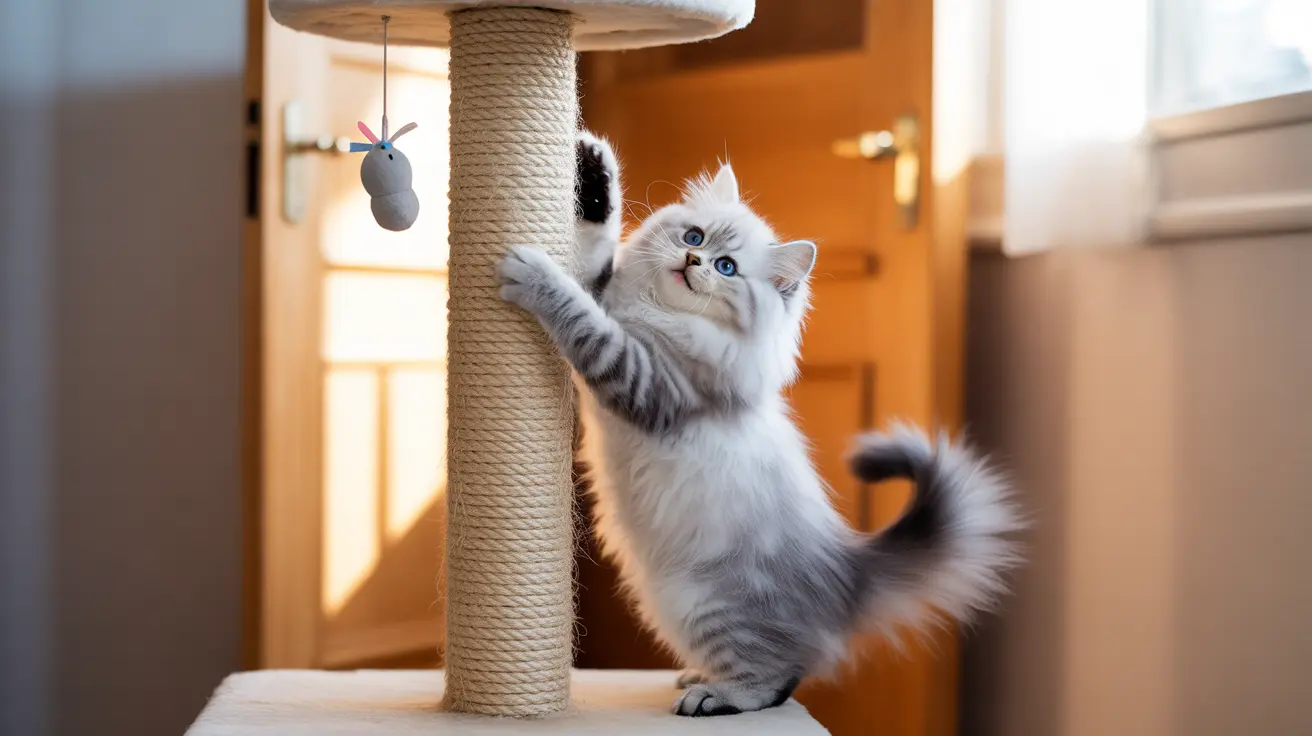If you're dealing with a cat that's constantly scratching at your doors, you're not alone. This common behavior can be frustrating for pet owners, but understanding why cats scratch doors and implementing the right solutions can help protect both your furniture and your peace of mind. In this comprehensive guide, we'll explore effective methods to redirect your cat's scratching behavior while maintaining their emotional well-being.
Understanding Why Cats Scratch Doors
Cats scratch doors for several important reasons. First, it's a natural instinct that helps them maintain their claws and mark their territory through scent glands in their paws. Second, door scratching often signals a desire for attention or access to a restricted area. Finally, this behavior can indicate stress, anxiety, or excess energy that needs an outlet.
Essential Solutions for Door Scratching
Provide Alternative Scratching Surfaces
The most effective way to stop door scratching is to provide appealing alternatives. Place sturdy scratching posts near problem doors, ensuring they're:
- Tall enough for full stretching
- Made of attractive materials like sisal rope
- Stable and won't wobble
- Positioned in visible, frequently accessed areas
Create a Door Protection Strategy
While training your cat to use appropriate scratching surfaces, protect your doors by:
- Installing clear plastic door guards
- Applying double-sided tape temporarily
- Using aluminum foil as a deterrent
- Setting up physical barriers when necessary
Environmental Enrichment Techniques
A well-stimulated cat is less likely to engage in destructive scratching. Implement these enrichment strategies:
- Schedule regular interactive play sessions
- Provide window perches for entertainment
- Create vertical spaces with cat trees
- Rotate toys to maintain interest
Addressing Nighttime Scratching
Many cats scratch doors at night when seeking attention or access. Combat this by:
- Establishing a consistent bedtime routine
- Engaging in vigorous play before bed
- Ensuring they have comfortable sleeping areas
- Providing access to essential resources overnight
Training and Positive Reinforcement
Successful behavior modification relies on positive reinforcement:
- Reward your cat when they use appropriate scratching surfaces
- Never punish scratching behavior
- Use treats and praise to encourage desired behaviors
- Be consistent with your training approach
Frequently Asked Questions
How can I stop my cat from scratching at the door without using punishment?
Focus on positive reinforcement by providing appropriate scratching alternatives and rewarding their use. Ensure your cat has enough environmental enrichment and attention, and consider using deterrent sprays or materials on doors temporarily while training.
What types of scratching posts or materials work best to redirect door scratching?
Tall, sturdy posts covered in sisal rope typically work best. Many cats prefer vertical scratching surfaces that allow full stretching. Offer various textures including cardboard, carpet, and rope to determine your cat's preference.
Why does my cat scratch doors more at night or when I close them?
Nighttime scratching often occurs due to excess energy, attention-seeking behavior, or the desire to access restricted areas. Establishing a consistent bedtime routine and providing adequate play during the day can help reduce this behavior.
Are there safe deterrents or door coverings to prevent cats from scratching door frames?
Yes, safe options include clear plastic door guards, double-sided tape, aluminum foil, or commercial deterrent sprays designed for cats. Always ensure any deterrent used is non-toxic and cat-safe.
How does playing with my cat before bedtime reduce door scratching behavior?
Regular play sessions, especially before bedtime, help exhaust excess energy and fulfill your cat's natural hunting instincts. This reduces the likelihood of nighttime activity and attention-seeking behaviors like door scratching.
Conclusion
Stopping your cat from scratching doors requires patience and a multi-faceted approach. By understanding their motivations, providing appropriate alternatives, and maintaining consistent training, you can successfully redirect this behavior while keeping your cat happy and fulfilled. Remember that every cat is unique, so you may need to try different combinations of these strategies to find what works best for your feline friend.






